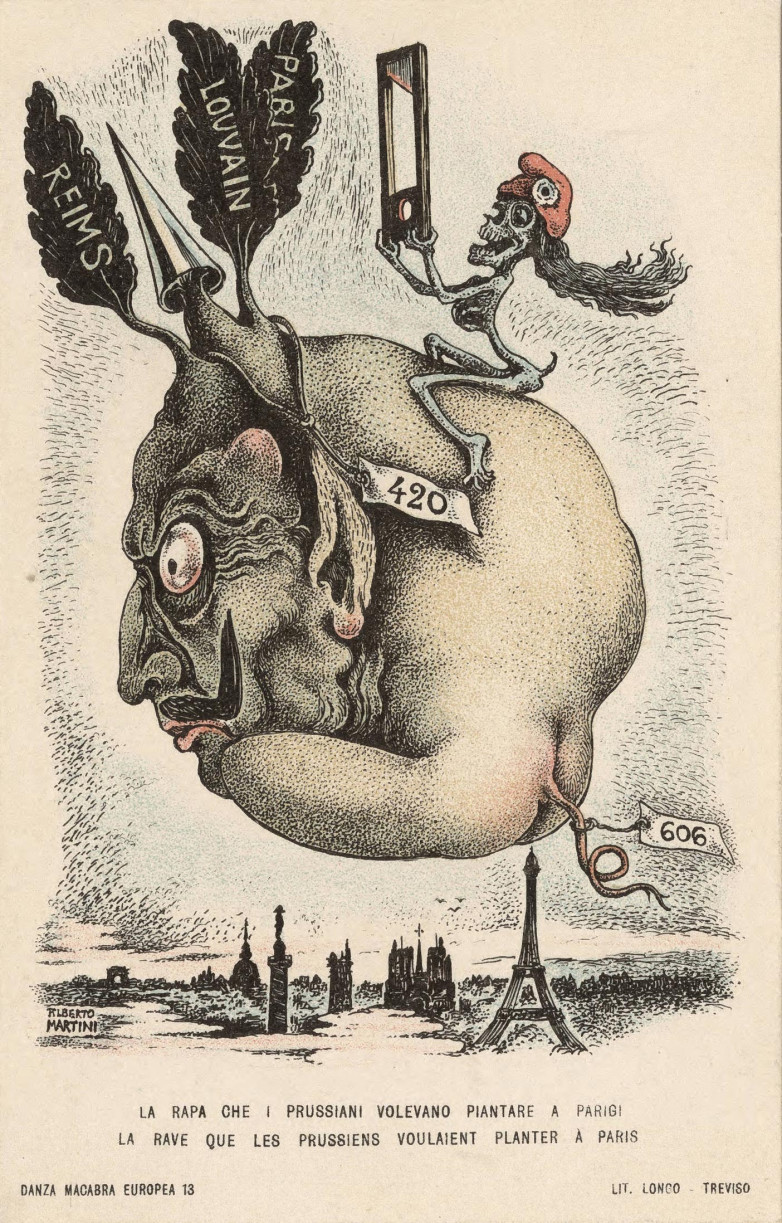It examines the global use of bestiary in visual satire during the period from the beginning of World War I through the end of the Cold War. Bestiary is most often associated with the medieval period, when artists and authors commonly presented images of real and mythical animals as embodiments of moral nobility or degradation. This practice persisted in caricature art of the ensuing centuries and eventually found new life in 19th and 20th century broadsides, posters, and illustrated periodicals.
The monsters and machines featured in the exhibition are graphic expressions of hostility and phobia towards great powers that were feared and loathed because of their perceived potential to pose danger, impose their will, and inflict harm.
Drawing from PUL’s wide collections of 20th century posters, illustrated periodicals, and ephemera from North America, Europe, Asia, Eurasia, and the Middle East, the exhibition looks at works of weaponized visual humor created by and aimed at exponents of different national cultures and ideologies. Despite their pointedly divisive agenda, the items on display will show what appears to be a shared impulse to dehumanize adversaries using images where hybrid human-animal or human-machine monstrosities depict satirical targets’ moral subhumanity.
"The period between World War I and the end of the Cold War was a time of ideologically-fueled hostilities of unprecedented scale and destructive consequence that eventually brought humanity to the brink of self-annihilation. This is the period historian Eric Hobsbawn called "the age of extremes," said co-curator Thomas Keenan, PUL Slavic, East European, and Eurasian Studies Librarian.

















